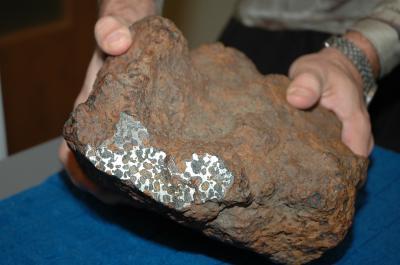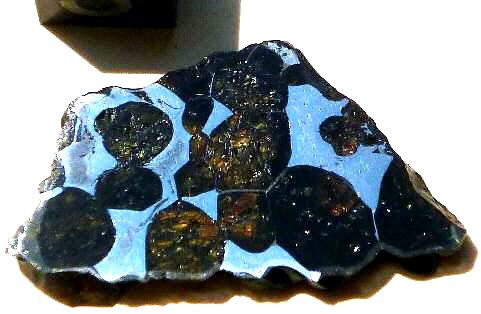Conception Junction
PallasiteOne of two main classes of stony-iron meteorite, the other being mesosiderites. Pallasites are igneous in nature and characterized by crystals of olivine, sometimes peridot (green gem quality clear olivine crystals), embedded in a matrix of Fe-Ni metal. The type specimen, weighing 680 kg, was found in the mountains near Click on Term to Read More, PMG-am (main-group, anomalous metalElement that readily forms cations and has metallic bonds; sometimes said to be similar to a cation in a cloud of electrons. The metals are one of the three groups of elements as distinguished by their ionization and bonding properties, along with the metalloids and nonmetals. A diagonal line drawn Click on Term to Read More composition)
Found 2006
40° 16′ N., 94° 41′ W. Employing a technique often utilized by famed meteoriteWork in progress. A solid natural object reaching a planet’s surface from interplanetary space. Solid portion of a meteoroid that survives its fall to Earth, or some other body. Meteorites are classified as stony meteorites, iron meteorites, and stony-iron meteorites. These groups are further divided according to their mineralogy and Click on Term to Read More hunter Harvey Nininger, Karl Aston distributed flyers around his Missouri farming community. In 2006, a 17 kg mass (held by Dr. Randy Korotev) was discovered embedded 90% in the ground near Conception Junction, MO. The mass was brought to the attention of Aston who identified it as a pallasite meteorite. The meteorite was subsequently acquired from the landowner with the assistance of Dave Gheesling. Although a thorough search was conducted with the help of meteorite hunter Robert Ward, no further masses were found.

Photo courtesy of Dave Gheesling








